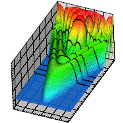Department of Physics and Astronomy: Publications and Other Research

Anthony F. Starace Publications
ORCID IDs
Dian Peng https://orcid.org/0000-0001-7016-9520
Document Type
Article
Date of this Version
2020
Citation
PHYSICAL REVIEW A 102, 063126 (2020)
DOI: 10.1103/PhysRevA.102.063126
Abstract
We investigate theoretically how the duration of an isolated attosecond pulse (IAP) can be minimized by carefully selecting frequencies of high-order harmonic generation (HHG) spectra produced by ultrashort driving laser pulses. Based on numerical calculations of HHG by solving the time-dependent Schrödinger equation for a single H atom, we provide three strategies for generating shorter IAPs. First, when the high-frequency region of an HHG plateau is selected one should use frequencies below the cutoff. Second, for a wide HHG plateau the low-frequency region can produce shorter IAPs than the high-frequency region. Third, we propose a method of producing IAPs with transform-limited duration by selecting special frequency stripes across the entire HHG plateau. Analytic analyses show that how our strategies work is related to the (Fourier-transform) properties of an Airy function. We also carry out HHG calculations considering macroscopic effects by means of intensity averaging over the focal region. We find that our conclusions for single-atom calculations can still apply for macroscopic HHG spectra as long as they resemble single-atom spectra.
Included in
Atomic, Molecular and Optical Physics Commons, Elementary Particles and Fields and String Theory Commons, Plasma and Beam Physics Commons


Comments
©2020 American Physical Society. Used by permission.